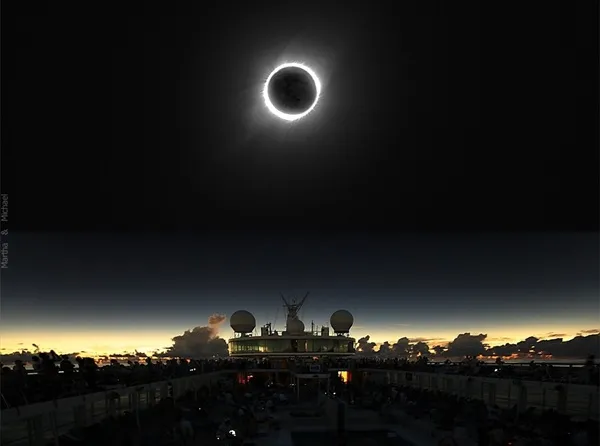Get ready for a celestial spectacle! On April 8th, 2024, a total solar eclipse will grace the skies across North America, turning day into a brief night for skywatchers lucky enough to be in the path of totality. This rare event, dubbed the “Great North American Eclipse” by some media outlets, is sure to captivate audiences and generate excitement for astronomy enthusiasts.
What is a Solar Eclipse?
A solar eclipse occurs when the Moon passes between the Earth and the Sun, blocking the Sun’s light from reaching certain parts of our planet. There are three main types of solar eclipses:
- Total: The Moon completely covers the Sun, plunging the day into darkness for a brief period within a narrow path on Earth’s surface.
- Partial: The Moon only partially covers the Sun, creating a crescent-shaped shadow on Earth.
- Annular: The Moon appears smaller than the Sun, leaving a bright ring of sunlight visible around the darkened Moon.
The 2024 Total Solar Eclipse
The April 8th eclipse will be a total solar eclipse, with the Moon completely obscuring the Sun for up to 4 minutes and 26 seconds for those directly in the path of totality. This path will stretch across parts of Mexico, the United States, and Canada, with totality visible in 15 U.S. states including Texas, Oklahoma, Missouri, Kentucky, and Maine.
Experiencing Totality
Witnessing a total solar eclipse is a truly awe-inspiring experience. As the Moon covers the Sun, the daytime sky darkens, stars become visible, and the temperature can drop slightly. The corona, the Sun’s outer atmosphere, becomes visible, creating a breathtaking sight.
Safety Precautions
Looking directly at the Sun, even during a partial eclipse, can cause permanent eye damage. It’s essential to use specially designed solar eclipse glasses to view the eclipse safely. Never look at the Sun through a telescope or binoculars without a proper solar filter.
How to Watch the Eclipse
If you’re not located within the path of totality, you can still experience the eclipse by viewing a live stream online. NASA will be providing live coverage of the event, featuring views from various locations along the path. You can also find live streams from other astronomy organizations and media outlets.
A Once-in-a-Lifetime Opportunity
The 2024 total solar eclipse is a rare event that shouldn’t be missed. If you have the chance to travel to the path of totality, make sure to plan your trip well in advance, as popular viewing locations tend to book up quickly. Even if you can’t witness totality firsthand, participating in a watch party or viewing a live stream can still be a rewarding experience. So mark your calendars for April 8th and prepare to be amazed by the power and beauty of the cosmos!
